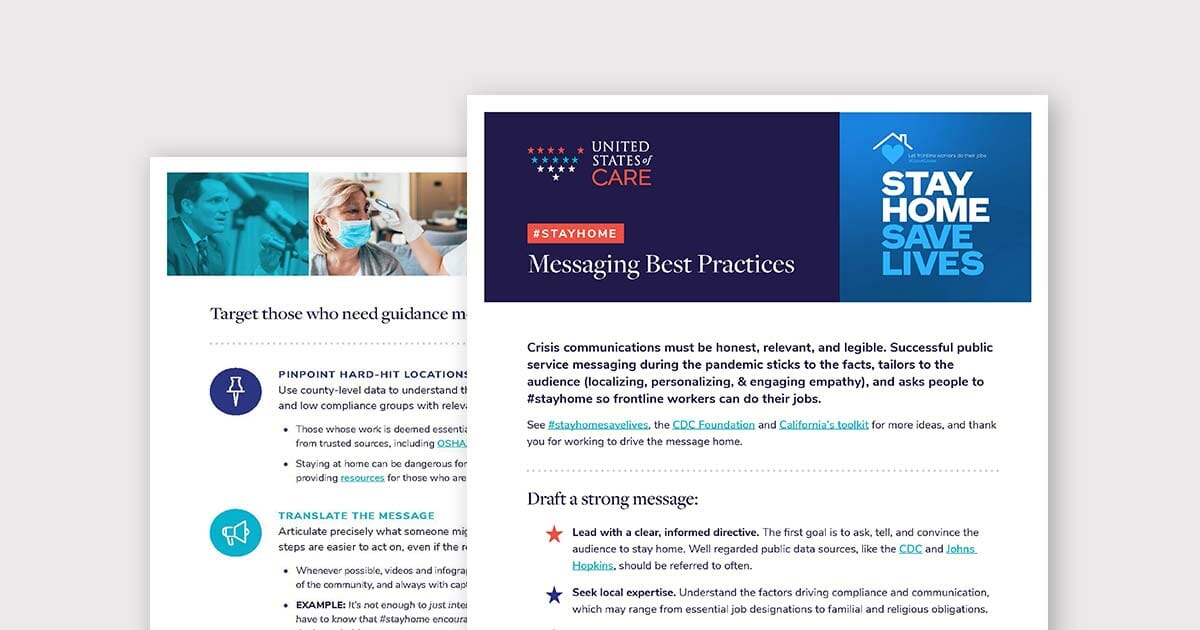COVID-19, Resources
#stayhome: Messaging Best Practices

Contents of Document:
Crisis communications must be honest, relevant, and legible. Successful public service messaging during the pandemic sticks to the facts, tailors to the audience (localizing, personalizing, & engaging empathy), and asks people to #stayhome so frontline workers can do their jobs.
See #stayhomesavelives, the CDC Foundation and California’s toolkit for more ideas, and thank you for working to drive the message home.
Draft a strong message:
- Lead with a clear, informed directive. The first goal is to ask, tell, and convince the audience to stay home. Well regarded public data sources, like the CDC and Johns Hopkins, should be referred to often.
- Seek local expertise. Understand the factors driving compliance and communication, which may range from essential job designations to familial and religious obligations.
- Emphasize support for frontline workers. If we #stayhome, we allow frontline health care workers to do their jobs and directly reduce the overwhelming load on our system. #itworks
- Weave in activities and services. Support local restaurants and artists with gift cards and delivery orders. Sew non-medical-grade face masks. Donate blood, if you can.
- Thank them for participating. Maintaining engagement and attention through the weeks ahead will be necessary to save lives. Thank them for being part of the solution. #weareinthistogether
Target those who need guidance most:
Pinpoint hard-hit locations
Use county-level data to understand the hardest hit areas. Connect high risk and low compliance groups with relevant messaging and local social services.
- Those whose work is deemed essential can still benefit from workplace safety advice from trusted sources, including OSHA/DOL, the CDC, and the Red Cross.
- Staying at home can be dangerous for victims and survivors of violence. Consider providing resources for those who aren’t safe at home.
Translate the message
Articulate precisely what someone might need to do differently. Clear lines and steps are easier to act on, even if the requests are hard.
- Whenever possible, videos and infographics should be created in all the major languages of the community, and always with captioning. These are some great references.
- Example: It’s not enough to just interact with family members–community members have to know that #stayhome encourages interaction with *only* members of the household.
Place reference points in safe, comfortable access spaces
Find trusted local reference points through which to communicate. Pre-existing relationships make messaging more effective, and working through surrogates broadens both reach and participation in #stayhome efforts.
- Even within the same state, celebrities, local leaders, and trusted advisors vary across geographic, political, and religious lines.
- Examples: Post telehealth resources on local community center resource sites. Use recognized political leaders in messaging, like the videos of Mayor Lori Lightfoot breaking down a variety of messaging tacks for the city of Chicago.